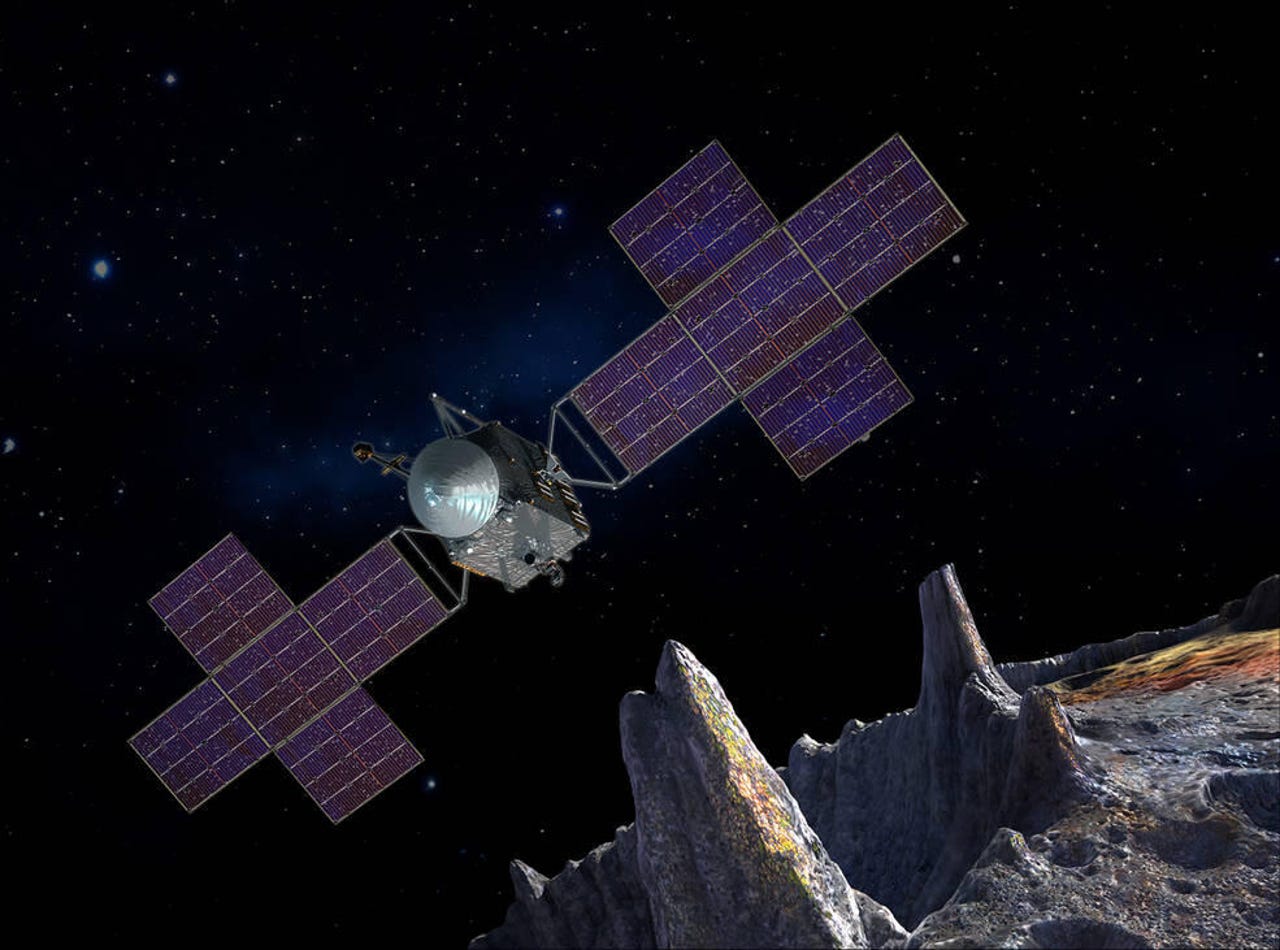
































Illustration of Psyche spacecraft with five-panel array
NASA/JPL-Caltech/Arizona State Univ./Space Systems Loral/Peter RubinNASA's Psyche asteroid mission -- the agency's first mission designed to study a metal-rich asteroid -- will be put on hold at least until next year, the agency announced. Due to late delivery of aircraft flight software and testing equipment, NASA won't be able to fully test the Pysche spacecraft ahead of this year's October 11 launch deadline.
The Psyche spacecraft was to make a 280 million-mile voyage -using Mars for a gravity assist -to its namesake asteroid as part of NASA's Discovery Program, a line of focused, high-quality missions to be completed at a low cost. The mission's goal remains to gather information on the asteroid Psyche. As a result of a violent collision during the Milky Way's formation, Psyche may contain exposed core material. The mission would afford NASA information on the interior of terrestrial planets, a layer usually hidden beneath layers of mantle and crust.
The Jet Propulsion Lab, managed for NASA by Caltech in Pasadena, is responsible for the Psyche mission's overall management -system engineering, integration and testing, and mission operations. As the JPL team began testing Psyche's system, compatibility issues with the software's testbed simulators were identified. Ultimately, though issues with the testbed simulators have been rectified, a full checkout of the launch software is no longer feasible within the 2022 launch timeline.
The ultimate fate of the Psyche voyage will be up to an independent assessment team. The mission's original launch period, from August 1 to October 11, would have allowed the spacecraft to reach the asteroid Psyche in 2026. If the independent assessment team moves forward with the Psyche mission, potential launch periods exist in both 2023 and 2024 -but the relative orbital positions of the asteroid and the Earth launch site would result in the mission arriving at the asteroid in 2029 and 2030, respectively.
The independent assessment team also will take into account estimated costs of the mission. Life-cycle mission costs for the Pysche mission total$985 million, with$717 million of that number spent to date.
The voyage is led by a team at Arizona State University, headed by Principal Investigator Lindy Elkins-Tanton, and the launch is managed by NASA's Launch Services Program, based at Kennedy Space Center.
"Our amazing team has overcome almost all of the incredible challenges of building a spacecraft during COVID," Elkins-Tanton said. "We have conquered numerous hardware and software challenges, and we've been stopped in the end by this one last problem. We just need a little more time and will get this one licked too. The team is ready to move forward, and I'm so grateful for their excellence."
 Hot Tags :
Innovation
Space
Hot Tags :
Innovation
Space